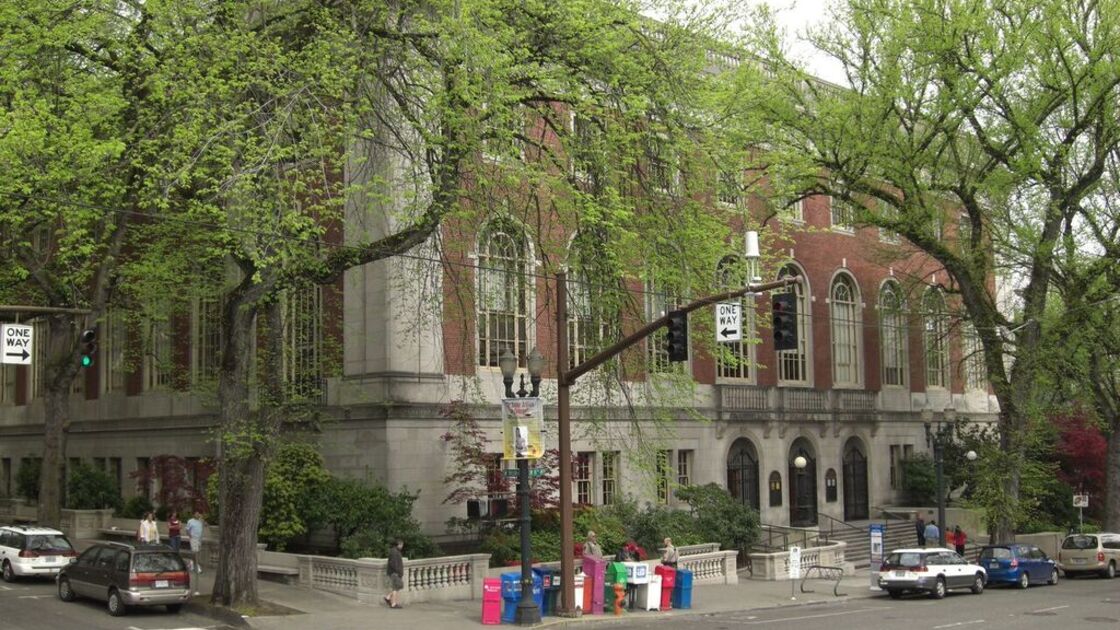EDMOND—Philadelphia Church of God singles from around the world will convene in scenic Oregon from December 24 to 28 for the Pacific Northwest Singles Winter Weekend 2015, the third such event in the past eight years. Perhaps the highlight of their trip will be on December 25, when member James Lowry Sr. guides the early Church history tour.
The four-hour tour will cover the key locations where the late educator Herbert W. Armstrong lived, worked and preached in the 1930s and 1940s. Lowry dubs the Portland area “the birthplace of the Philadelphia era.”
A luxury bus with a restroom and television monitors will transport singles to their first stop at a newspaper plant in Washington State. This Vancouver building once housed The Columbian, for which a 32-year-old Mr. Armstrong conducted surveys in 1924. “So far as I know, I was the originator of these polls,” wrote Mr. Armstrong in Chapter 3 of his autobiography.
Lowry will then take the singles south over the Columbia River, which was where Mr. Armstrong baptized Basil Wolverton into the Radio Church of God in 1941. Wolverton was a well-known illustrator whose work appeared in Worldwide Church of God publications including The Bible Story, which he also wrote.
The next stop will be the Portland Gas and Coke Co., where Mr. Armstrong’s brother, Russell, worked. After his famous 18-second prayer during a time of dire need in his family, Mr. Armstrong visited his younger brother’s workplace. It was there that Russell offered to buy Mr. Armstrong an overcoat on credit, which he initially refused before realizing that God was answering every last detail of his prayer.
“Mr. Stephen Flurry gave a [Doctrines of the Philadelphia Church of God] class a couple weeks before the Feast about how Satan loves to destroy history,” Lowry said, noting that the structure is now partially demolished.
The Multnomah County Library will be closed on the day of the tour due to Christmas, but singles will still stop by for a moment to see the building where Mr. Armstrong waited on the front steps in the early mornings for the doors to open.
“That library was called the crown jewel of Portland, where Mr. Armstrong said he was personally taught by Jesus Christ,” Mr. Lowry said.
Visitors will next relive Mr. Armstrong’s interactions at the Portland Auditorium, where he encountered a man suffering from a crooked spine. Here Mr. Armstrong tried in vain to help this ailing man meet Aimee Semple McPherson, who had a reputation for miraculous healings. Before the man and his wife left the auditorium, Mr. Armstrong offered to come to their house to pray for his healing—on condition of the couple’s obedience to God and belief in His power.
When Mr. Armstrong arrived at their home on Foster Road—one of the next tour stops—he discovered that they had no interest in obeying God. Because they wouldn’t comply with God’s conditions for healing, Mr. Armstrong could not pray for them.
“When I was a kid, I used to live near Foster Road and heard Mr. Armstrong talking about it,” Lowry said. “I was like, ‘Where is that?’” The road was only one neighborhood away, but the late pcg minister David Todd beat him to the discovery.
Mr. Armstrong later prayed for this same crippled man to be healed of blood poisoning. The man miraculously recovered, but he still refused to obey and thus never received healing for his crooked spine.
For the next portion of the tour, Lowry said he is planning something new. The group will walk along Molalla Avenue in Oregon City, taking turns carrying a 15-pound dumbbell simulating the weight of Mr. Armstrong’s briefcase as he briskly strode two or three miles uphill to his weekly “Sabbath-school lesson.” At times, Mr. Armstrong barely had enough money to travel across town for the meetings, and nothing leftover to take a bus up the hill or return home. Yet every time he came up short, one of his 10 or so brethren would hand him just enough tithe money to get home.
“I never made the need known,” Mr. Armstrong wrote in Chapter 20. “But God always had a way of supplying every need!”
“I hope everyone can appreciate the efforts and struggles the Armstrongs went through during this period of financial hardship yet windfall of spiritual blessings,” Lowry said.
The group will then visit the two houses where Mr. Armstrong lived during his time in Portland. Next, they will explore the site of an old Billy Sunday tabernacle, the lodging place of the man who successfully prayed for the miraculous healing of Mr. Armstrong’s wife. It was here that Mr. Armstrong showed the man an article he wrote disproving Sunday observance. The man agreed with every bit of the paper, but he wouldn’t apply it in his own life.
Following that encounter, the man sorrowfully told Mr. Armstrong that he had somehow lost his ability to be heard by God when he prayed for others to be healed.
Finally, if time permits, Lowry says he will show the singles the former site of a 600-seat auditorium that Portland radio evangelist Willard Pope offered to sell to Mr. Armstrong. God showed Mr. Armstrong that buying an auditorium at that stage in the Work would mean tying him down to the local area instead of expanding the gospel message to the rest of the world. For that reason, Mr. Armstrong declined Pope’s offer. The auditorium is now a grocery store, and the Work God built through Mr. Armstrong moved to California—and then expanded worldwide.
Lowry said his goal for the Portland-area tour is to “bring the pages of the Autobiography to life.”
